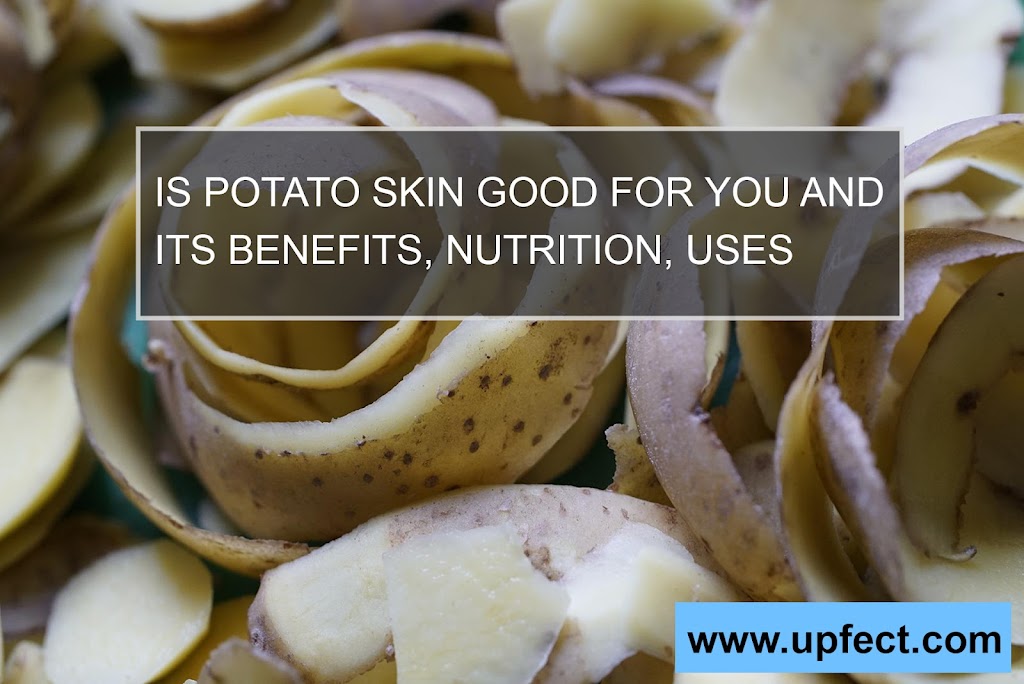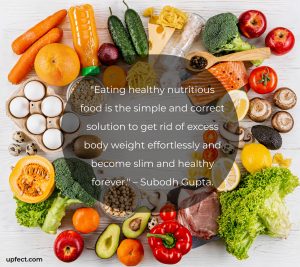Are Potato skins Good?
Potato skin is the Solanum tuberosum plant, a starchy tuber, an edible tuber, found all over the world and throughout the year. Potatoes can be eaten in any way. As potato skins are rich in carbohydrates, eating too much can lead to weight gain. But eating potatoes in the right amount and in the right way is healthy. Potato can also be called the king of vegetables. Besides rice, pulses, fish, meat or the use of potatoes is the most in any cooking.
The potato was originally believed to have been domesticated independently by native Americans in multiple locations, but later genetic studies identified a single origin in the region of present day southern Peru and extreme northwestern Bolivia. The Spanish introduced the potato to Europe from the Americas in the second half of the 16th century. However, potatoes are cultivated in almost all countries of the world.↗️
Potato peels contain potassium, which has many health benefits. According to the Linus Pauling Institute, just four potato peels a day provide you with 628 milligrams of potassium. Eating the nutrient-rich skin of a potato can provide the human body with more fiber, protein, minerals, vitamins and phytochemicals than eating the whole potato.
Vitamin C, vitamin A, and vitamin B in potato peel and almost no fat. It also contains fiber, minerals like iron, potassium, zinc, magnesium, folate, phosphorus and calcium. Potato peel contains flavonoids, anti-inflammatory and antioxidant effects, which protect our body from various diseases.
Potato peels are also helpful in maintaining metabolism. According to experts, eating potato peel strengthens the nerves. Potato peels are a natural source of flavonoids, phytonutrients that protect your body from infection and disease.
Sweet potato skin
Sweet potato skin are an excellent source of fiber, antioxidants, potassium, magnesium, manganese, calcium, vitamin A, vitamin B, vitamin C, which carries potential health benefits such as diabetes under control, increases brain function, regulate blood pressure and lower cholesterol, improves skin and hair health and prevent chronic disease. The Sweet potatoes are rich in pantothenic acid, which moisturizes and improves skin integrity when applied to the skin.
About 50% of potato skins contain dietary fiber. The primary component of potato fiber is polysaccharide. Sweet potato skins are safe to eat and can easily be added to most recipes. For example, healthy sweet potato skins with cashew sour cream, sweet potato skins chips, crispy sweet potato skins, roasted sweet potato skins, etc. This recipe is very healthy and beneficial for health.
Is potato skin good for you?
Niacin is present in potato skins. It helps the human body to produce the energy required by the body by breaking down the food and to create new cells. Carbohydrate rich foods such as potatoes can increase serotonin levels to help you sleep better. Potato skins contain iron, which boosts red blood cell function and also helps in preventing anemia.
The potato skin is a great source of potassium. Which helps the body to metabolize better through various chemical reaction and helps the cells to produce usable energy. Getting enough potassium also lowers your risk of stroke, but only if your potassium comes from food, not supplements, reports the University of Maryland Medical Center.
Potato skins are also a good source of iron, vitamin B3, iron helps support red blood cell function. Vitamin B3 helps your cells recover from physiological stress. By eating potato peels, it is possible to prevent the risk of various diseases related to anemia. Potato peels contain flavonoids, which help prevent various types of bacterial and fungal infections and also prevent various diseases such as allergies.
Potato skin fiber is insoluble, and can bind bile acids in vitro. Bile acid sequestration is a mechanism by which certain sources of dietary fiber reduce plasma cholesterol. According to experts at the National Institutes of Health, eating potato skins can help maintain bone density and reduce the risk of osteoporosis in postmenopausal women.
Is potato skin
Chlorogenic and caffeic acids, present in potato peels, serve as the major phenolic compounds responsible for the anti-viral activity. Due to the anti-bacterial properties of potato skins, it is very helpful in healing wounds by preventing the overgrowth of bacteria. Potato skin contains alkaloids and acts as a defense against predators, fungi and insects.
An Australian study published in the Journal of Nutrition in December 2014 found that B vitamins in potato skins can help reduce stress and improve your mood.
Due to the high fiber content in potato skins, fiber plays an important role in reducing the risk of colon cancer, heart disease, and type 2 diabetes as well as in regulating the metabolism. Potato peels are an effective and natural ingredient for soothing sunburned skin.
Quercetin, a flavonoid found in potato skin, possesses powerful anti-inflammatory properties and antioxidant capacity that protects the body’s cells from free radical damage.↗️
Potato skins are great for compost. Compost is soil fertilizer and a mixture of ingredients used to improve soil. Potato can be used to fertilize your plants or garden, treat acne, reduce excess oil, treat dark spots and whiten skin.↗️
Potato peel is a rich source of phenolics and a fair source of vitamins such as riboflavin, ascorbic acid, folic acid and vitamin B6. Phenolic compounds extracted from potato peels have been shown to inhibit lipid oxidation in bulk oil and muscle model systems. Phenolic compounds from potato peels have been shown to bind carcinogens and have been reported to have anti-carcinogenic properties.↗️
Is potato skin good
Potatoes are beneficial for health. Potatoes are rich in vitamins, minerals, and antioxidants, which make them better for health. Dietician Garima Goyal told HT Digital that potatoes are high in fiber as well as resistant starch and can keep you full for longer. He says that it can prevent overeating. Potassium in potatoes keeps hypertension, which reduces the risk of heart attack.
Fried potatoes contain no vitamin A. Autism is a multifaceted developmental disorder that is rarely accompanied by abnormal eating habits. To the author’s knowledge, most children with autism whose diets are deficient in vitamin A have consumed excessive amounts of fried potatoes. It is essential to pay attention to possible vitamin A deficiency when fried potatoes are eaten exclusively.↗️
Potatoes have antispasmodic and antacid properties that can help soothe common gastrointestinal symptoms including heartburn and indigestion. The fiber content in potatoes prevents constipation and helps increase regularity for a healthy digestive tract.
potato skin good
Animal studies have shown that potatoes can suppress the proliferation of tumor cells. One study found fried potatoes to be associated with an increased risk of estrogen receptor negative (ER) breast cancer.↗️
Inflammatory bowel disease (IBD) can begin after the intestinal epithelial barrier disrupted. This disrupted, in turn, allows liminal antigens to enter the mucosal immune system unhindered and leads to an uncontrolled inflammatory response. Glycoalkaloids, which are found in potatoes, disrupt cholesterol-containing membranes such as the intestinal epithelium.↗️
Potatoes are high in potassium, which is another inflammation-fighting food that can help reduce eczema symptoms. Potatoe contain great amounts of iron, mostly concentrated in their skin. Potatoes are rich in vitamin D and are safe to eat during jaundice. Potatoes are high in starchy carbohydrates, which keep the liver grounded and stable.
Nutritionist and author Lindsay Boyers breaks down the benefits of potatoes for gut health in her book Gut Health Hacks. According to Boyers, the starch in potatoes is resistant to digestion, which means it travels to your large intestine and serves as a probiotic, AKA food source, for gut bacteria you need. It also helps produce fatty acids that protect the intestinal lining and prevent harmful substances from entering the bloodstream.↗️
Sweet potato skins beneficial for health. It can be safe to eat and easily added to most recipes. Sweet potato skins are good source of fiber, antioxidants and other nutrients that can help various health benefits, including reducing cholesterol, regulating blood pressure, improving gut health, lower the risk of heart disease, bone growth, under control diabetes and many others health benefits.
The Sweet potatoes are rich in vitamin C, which helps fight flu viruses and common colds, and aids in blood cell formation. Sweets potatoes are considered a fertility boosting food, as they are rich in vitamin A. Sweet potatoes are great source of magnesium, which fights stress, improves your mood and helps with relaxation. Sweet potatoes are rich in iron, an essential vitamin for any woman trying to conceive.
According to the American Heart Association, sweet potatoes with skins, rich in dietary fiber, not only slow down digestion to help control your weight, but they can also help you improve blood cholesterol levels and reduce your risk of heart disease, stroke and even type 2 diabetes.
Sweet potato skin contains vitamins C and E and other nutrients that are good for boosting the immune system. Potassium helps with electrolyte balance, muscle contraction and nerve function management, as well as blood sugar control. Compared to eating a sweet potato without skin, which contains only 230 mg, or 7% of the daily value of potassium, eating both the and fresh of a sweet potato provides about 475 mg, or 14% of the daily value.↗️
Is a potato a vegetable
Potato is a vegetable of course. There is no doubt that a potato is a vegetable botanically. Although not your typical leafy green, it is considered a starchy vegetable, Potatoes are tubers and is also nutritionally different from others types of vegetables.
Moreover, delicious nutritious dishes are prepared from potatoes, such as stir- fries of potatoes with various vegetables, cooking vegetables with potatoes with various vegetables.
How to make potato salad
- Boil potatoes in salted water for 20 minutes until tender, then cool. Peel the potatoes and place them in a large bowl.
- Mix all the dressing ingredients together in a large bowl. Add egg whites, celery, onion, and pickles. Then, stir well and refrigerate.
How to make a baked potato
It’s best to use russet potatoes, because their skin really puffs up and crisps up in the oven.
- First, scrub the potatoes well and pay them dry with a kitchen towel. Then, poke the potatoes with a fork a few times to create small holes all over their surface.
- Next, season potatoes and rub them with olive oil. Sprinkle salt over potatoes and transfer to hot oven.
- Bake for 45 to 60 minutes, until skins are crisp and puffed.
- Finally, let the potatoes cool for a few minutes before slicing them open, scooping out the insides, and topping them with your favorite fixings.
How to make potato skins
- First bake some small russet potatoes for about an hour or until soft. Cut the potatoes in half and cut the insides into “skins”. Leave 1/4 to 1/2 inch of potatoes inside the skins.
- Brush skins with olive oil and sprinkle with salt and pepper to taste. Bake the potato skins until crispy, then add all your toppings. The potatoes get one more trip through the oven, after which they’re ready to decorate and serve.
Potato Nutrition
The USDA provides the following nutrition information for (100 grams) potatoes, white, skin and raw:
- Water: 77 g
- Calories: 87 g
- Total Carbohydrates: 20.1 g
- Dietary Fiber: 1.8 g
- Sugar: 0.91 g
- Protein: 1.87 g
- Total Fat: 0.1 g
The same provides a 100 gram serving:
- Sodium: 4 mg
- Calcium: 5 mg
- Potassium: 379 mg
- Phosphorus: 44 mg
- Magnesium: 22 mg
- Iron: 0.31 g
- Choline: 13.5 mg
- Pantothenic acid: 0.52 mg
- Niacin: 1.44 mg
Potatoes also provide:
- Vitamin C: 13 mg
- Vitamin B-6: 0.299 mg
Potato skin benefits
Potato Skin Keeps the heart healthy
Potatos skins contain phenolic compounds namely chlorogenic and Gallic acids. Which acts as an antioxidant and prevents heart damage caused by free radicals and also helps keep the heart healthy. Minerals like iron and calcium, which help in preventing heart disease. Omega-3 fatty acids in potato skins reduce the risk of heart attack, stroke and other heart diseases.
Potato peels contain potassium that lowers blood pressure and keeps the heart healthy. The fiber in potato skins helps maintain proper heart function by clearing cholesterol from blood vessels. A protein in potato skins known as patatin can help lower blood pressure and protect the heart from potential disease.
Prevents cancer
Potato skins are rich in phytochemicals which are powerful antioxidants. Also, it contains a lot of chlorogenic acid which protects the body from cancer through carcinogens. Potato peels contain phenolic compounds, which are particularly beneficial in preventing chronic diseases and cancer. Since potato skins contain a type of proteinase inhibitor, it can build resistance against cancer.
Potato Skin Promotes bone health
There are various minerals like calcium, magnesium, potassium, zinc, copper in potato peel which help our bones to be strong and increase bone density. About 50-60% of our body’s magnesium is in the bones. Potato peels contain good amounts of vitamin complex and calcium, which strengthen bones and are responsible for maintaining bone health.
Calcium also helps with strong bones, and if we don’t get enough calcium every day our bodies will take calcium from our bones leading to brittle bones.
According to experts at the National Institutes of Health, eating potato skins can help maintain bone density and also reduce the risk of osteoporosis in postmenopausal women.
Vitamin C rich in potato skins, which increases the absorption of iron, which is essential for the formation of collagen, an important bone tissue component. Vitamin A is essential for cells to from strong bones and affects the cells that break down bones.
Regulates Blood Pressure
Antioxidants, glycoalkaloids, polyphenols and high fiber content in potato peels can reduce blood pressure. Potato peels keep blood pressure under control as they contain a lot of potassium which helps in controlling blood pressure. Potato peel is a good source of dietary fiber, which has the effect of reducing blood pressure in hypertensive patients.
Chlorogenic acid in potato skin is by far the most abundant phenolic component and constitutes up to 90% of total phenolics. It has a protective effect on neuroinflammatory conditions and has the ability to lower blood pressure in hypertensive patients and its derivative has been shown to reduce blood pressure in hypertensive rats ( Cheplik, 2010).↗️
Potato Skin Reduces weight
Potato skins contain no fat, no cholesterol, and no sodium, making them part of a healthy weight loss diet, Diekman says. Potatos skins are also rich in fiber, which passes through the body slowly without being digested, increasing satiety, also helping control calories and reducing appetite, thereby keeping weight under control.
Animal studies have shown that potato peel powder, high in bioactive phenolic compounds and glycoalkaloids, reduced weight gain in rats fed a high fat diet.↗️
Keeps diabetes under control
Potato peels are high in fiber and can help control blood sugar. They also help prevent type 2 diabetes.
A high intake of dietary fibers has a positive effect on the blood glucose profile and its health complications in both healthy and diabetic individuals. Dietary fiber can affect the absorption of other simple carbohydrates. Effects of dietary fiber on blood glucose and insulin response have also been demonstrated by many other authors.↗️
Potato skin peels for hair care
Potato peels help you add shine to your hair and also help them grow faster. The Potato peel contains vitamin A, vitamin B, vitamin C, calcium, potassium, zinc, and copper, which in addition to blackening white hair, reduce hair fall, remove dandruff and strengthens hair roots. The starch present in potato peels provides nourishment to the hair roots.
Improves potato skin health
If you have sunburned skin or dark circles around the eyes, reduce excessive oil, apply a mashed potato peel and rub it lightly and wash it off with cold water. Vitamin C increases collagen in the skin, which helps to reduce dark spots caused by heat and sunlight. Vitamin B helps to transform and removes dark spots and pimple marks.
Potato skin Improves eye and brain function
Powdered potato peels have also been shown in the diet to reduce eye lens damage associated with diabetic conditions. Potato skin is a source of choline, which is a nutrient essential for a healthy brain and nervous system. The Potato skins also contain vitamin B6, folate, which prevents the diseases of forgetfulness.
Potato skin benefits
- Studies have shown that eating potatoes daily protects against scurvy. Because it contains various antioxidants, minerals and nutrients.
- It is better to eat potato at night instead of eating high protein food, because it helps in good sleep by releasing serotonin hormone. Serotonin also help can regulate depression.
- The magnesium in potatoes works great to prevent calcium build up and stone formation.
- According to the University of Maryland Medical Center, the magnesium and potassium in potatoes may contribute to bone health.
- Potatoes contain an enzyme called catecholase that helps reduce puffiness under the eyes.
- Brain development depends on glucose level in our body, oxygen supply, vitamin B, amino acids like Omega-3 which is present in potato. A 1995 study published in the American Journal of Clinical Nutrition found that moderate increases in glucose may help improve learning and memory.
Potato Skin Side Effects
- Raw potatoes are harmful for pregnant women but fried potatoes can be eaten.
- Levels of glycoalkaloids aren’t high in potato eyes, but if germination occurs in that area, concentrations of the chemical will be higher, according to Gosselin. For safety’s sake, he recommends wiping the eyes of the potato before use.
- Since potatoes are high in carbohydrates, people who tend to be overweight should limit their addiction to potatoes.



